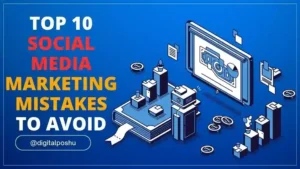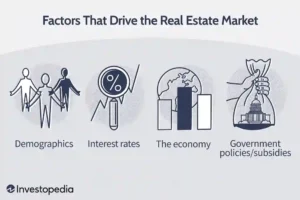How to Build a Strong Social Media Presence for Your Brand

Alright, y’all. Let’s talk social media. In today’s world, building a strong presence online isn’t just a nice-to-have—it’s absolutely crucial for making your brand known. I mean, who’s going to buy your product if they don’t even know you exist, right? It’s like trying to sell sunscreen in the Arctic—nobody’s gonna bite. But trust me, once you get the hang of it, social media can do some wicked things for your brand.
Your brand doesn’t have to be a household name just yet, but with the right strategies, it can get there. So, let’s dive in.
Why Does a Strong Social Media Presence Matter for Your Brand?
Look, if you’ve been avoiding social media or thinking “who needs it,” you’re missing out big time. Here’s the deal: platforms like Facebook, Instagram, and TikTok give your brand a stage to strut its stuff. A chance to engage, build relationships, and—get this—make sales.
I once thought, “Nah, I’ll stick to word of mouth.” Fast forward three months, and I was wondering why no one knew about my homemade jams (they’re good, too, if you’re asking). My aunt Karen, bless her heart, still hasn’t tasted a jar—but social media can change that for your brand in a heartbeat.
Plus, social media is one of the most cost-effective ways to advertise. I mean, I’ve spent more on a “limited edition” hoodie than I’ve spent on all my Facebook ads combined. So yeah, a strong social media presence? Worth every penny.
1. Understand Your Audience (Because “Everyone” is NOT an Audience)
Fast forward past three failed attempts at “targeting everyone” (I may have tried this with my old cat-sitting business—long story). To really make your mark, you’ve got to know your brand’s audience like you know the back of your hand.
It’s like this: You wouldn’t try to sell snowshoes in Miami, right? That’s pretty much what it feels like when your brand is blasting generic content to the wrong people.
Who Exactly is Looking for Your Brand?
When you’re thinking about your brand, don’t imagine a crowd of faceless people. Get specific. Age, interests, where they hang out online—basically, their deepest, darkest desires for your product. (Okay, not that dark.)
I learned the hard way that if you try to cast too wide a net, all you catch is a bunch of soggy socks. Make your content speak directly to your audience’s pain points—whether they’re dealing with stress, bad hair days, or bad coffee (don’t even get me started).
Are They on Facebook or TikTok?
Some people love TikTok; some just want to scroll Facebook and see what their cousin Steve is up to. So, where do your people spend most of their time? If they’re over 45, TikTok might be a no-go. But if your brand is all about Gen Z, TikTok is where the magic happens.
Pro tip: Don’t try to be everywhere. Focus on the platforms that matter most for your brand and dive in deep. No one has time to post on 16 different platforms anyway. (Not unless you’re some sort of wizard, and I, for one, am not).
2. Picking the Right Platform for Your Brand (It’s Not All About Instagram)
Instagram. Facebook. LinkedIn. Pinterest. Which one’s the best? The answer is: It depends. It depends on where your brand’s audience is hanging out.
I remember when I first started promoting my knitting tutorials (yes, knitting). I thought, “Instagram’s great! It’s all about visuals!” I made all these gorgeous posts—and crickets. Then, I found out most of my target audience was on Pinterest. (Who knew?!)
Choose Wisely—And Stick to It
If your brand is trying to sell professional services, LinkedIn’s a no-brainer. But if you’re selling killer coffee mugs, Instagram and Pinterest might be your jam.
My advice? Stick to two or three platforms that make the most sense for your brand. You can always branch out later when your brand is a little more seasoned.
3. Content: Make it Count
Now, let’s talk content. The heart of your brand’s social media presence. I mean, what good is a pretty page if the posts are as dry as my 2020 sourdough starter? RIP, Gary. Anyway, here’s the kicker: Content is king. But, like, you need to actually make it worth people’s time.
Show Off Your Brand’s Personality
People don’t want to follow a robot. They want personality. They want to connect. I remember the first time I tried to make a “serious” post for my art supplies brand. It was all blah, blah, blah—no soul. The second I threw in a weird, offbeat joke, engagement shot up.
What I’m saying is this: Be authentic. Be real. Let your brand’s personality shine through. (Also, it’s okay to be a little weird. Embrace it.)
Share What Resonates
Let me tell you, nobody cares about every update. Just like how nobody cares when my neighbor Tina’s cat sneezes (though I’ll admit, the internet might find that adorable). Stick to content that speaks to your brand’s core message and value.
I’m Not Gonna Lie: Video is the Holy Grail
Video is king. No, seriously, it is. I learned the hard way that a simple video of me making a mess in my kitchen can do better than a perfectly curated photo. I swear, that one clip of my blender almost took me viral—who knew?
4. Engage Like a Human
So, you’re posting content. But are you actually engaging with people? Because if your brand isn’t, it’s like throwing a party and then hiding in the bathroom.
Respond. Respond. Respond.
You know those “Thank you for your message!” replies? They’re nice, but real engagement goes deeper. Start conversations. Ask questions. And don’t just drop your sales pitch—actually talk to people.
One time, I replied to a comment about my homemade candles with a story about how I once set my kitchen on fire trying to make a soy-based candle. It was embarrassing, but I’ll tell you what, I got more interactions from that than any perfectly-planned post.
5. Influencer Marketing: Get a Little Help
Here’s the deal: Your brand doesn’t have to do all the heavy lifting alone. Partnering with influencers is a smart way to give your brand a boost.
Find the Right Fit
Look, not every influencer is a good fit for your brand. You need to find someone whose followers actually care about your products. Just because someone has a ton of followers doesn’t mean they’ll be a fit. I once asked a pet influencer to promote my hand-knitted socks. It…didn’t work out.
Keep It Real
And by real, I mean, don’t make the partnership feel scripted. The best influencer partnerships happen when the influencer genuinely likes your brand and shows that off.
6. Track Your Results—Or Be a Ghost
Now, it’s time for the hard part: tracking results. Do you even know how well your brand is doing?
Metrics That Matter
Here’s the breakdown:
- Engagement Rate: Are people commenting, liking, sharing?
- Reach and Impressions: How many eyeballs are seeing your stuff?
- Follower Growth: Are you growing your audience?
Don’t get overwhelmed—track the big stuff and leave the details for later. But always be tracking.
7. Paid Ads: Gotta Spend to Win
Not everyone can go viral, but guess what? Paid ads can get you there faster. I had to bite the bullet with ads for my brand, and while I wasn’t rolling in money, I definitely got more eyes on my product.
Pick the Right Ad for Your Brand
Pick a simple ad format and stick to it. I always loved the carousel ads on Instagram. No idea why—maybe because I’m easily entertained by swiping.
Conclusion
Building a strong social media presence for your brand doesn’t happen overnight. You’ve gotta keep at it. Stay authentic. Respond to comments. Don’t take yourself too seriously. And, seriously, if my first herb garden can thrive (after a few unfortunate mishaps), so can your brand.







